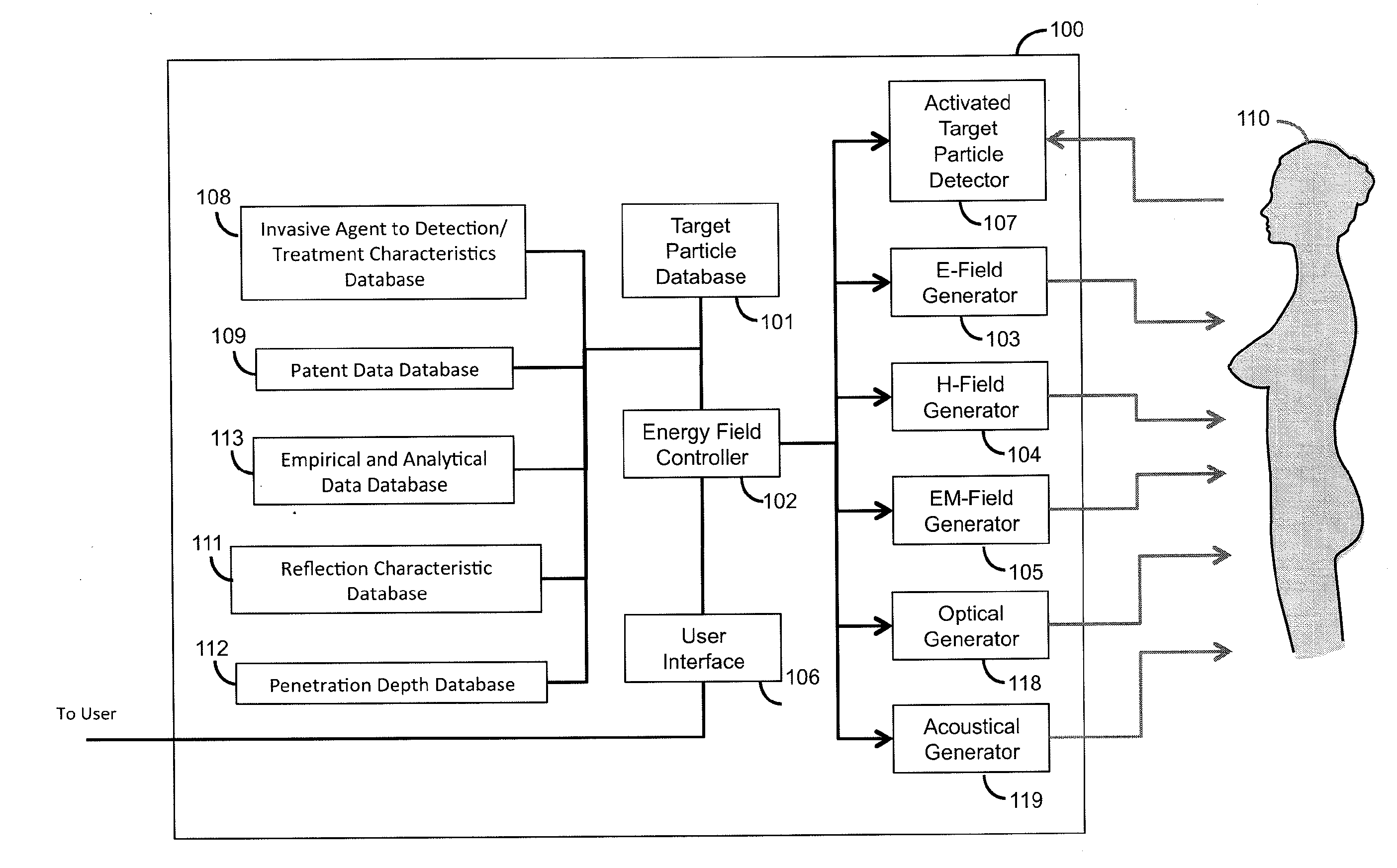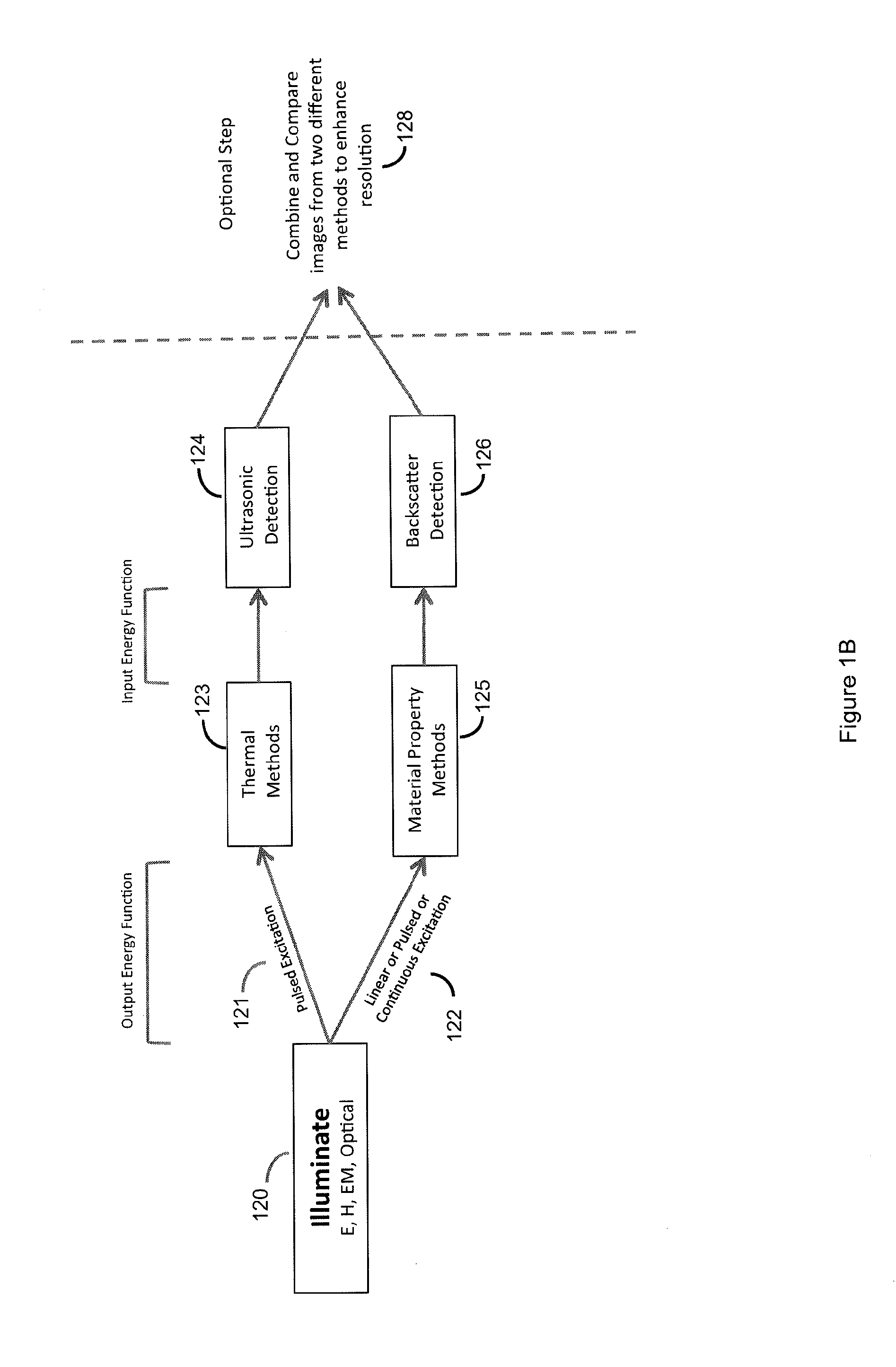System for correlating energy field characteristics with target particle characteristics in the application of the energy field to a living organism for detection of invasive agents
a technology of energy field and target particle, applied in the field of detection of invasive agents, can solve the problems of creating an added complexity to the imaging process, difficult if not impossible to see nerves using contemporary imaging methods, etc., and achieve the effect of enhancing the imaging separation, enhancing the contrast level, and optimal imaging environmen
- Summary
- Abstract
- Description
- Claims
- Application Information
AI Technical Summary
Benefits of technology
Problems solved by technology
Method used
Image
Examples
Embodiment Construction
[0032]The use of target particles is necessary to improve differentiation between normal cells in the living organism and the invasive agents found in the living organism, which differentiation is accomplished by the contrast produced by the detectable effects of activated target particles. The Energy Field and Target Correlation System is directed to the application of an energy field (electric, magnetic, both) to a living organism (typically human or animal) to activate target particles which have been deployed in the living organism, which target particles bind to the invasive agents or are taken up by the invasive agents. The activation fields can take on the following forms: an E-field, an H-field, an EM-field, optical fields such as lasers, acoustic fields, and so on. The target particles can exhibit a response that is thermal, mechanical, electric, or chemical in nature, as a function of the characteristics of the target particles. This response of the target particles to the...
PUM
 Login to View More
Login to View More Abstract
Description
Claims
Application Information
 Login to View More
Login to View More - R&D
- Intellectual Property
- Life Sciences
- Materials
- Tech Scout
- Unparalleled Data Quality
- Higher Quality Content
- 60% Fewer Hallucinations
Browse by: Latest US Patents, China's latest patents, Technical Efficacy Thesaurus, Application Domain, Technology Topic, Popular Technical Reports.
© 2025 PatSnap. All rights reserved.Legal|Privacy policy|Modern Slavery Act Transparency Statement|Sitemap|About US| Contact US: help@patsnap.com



